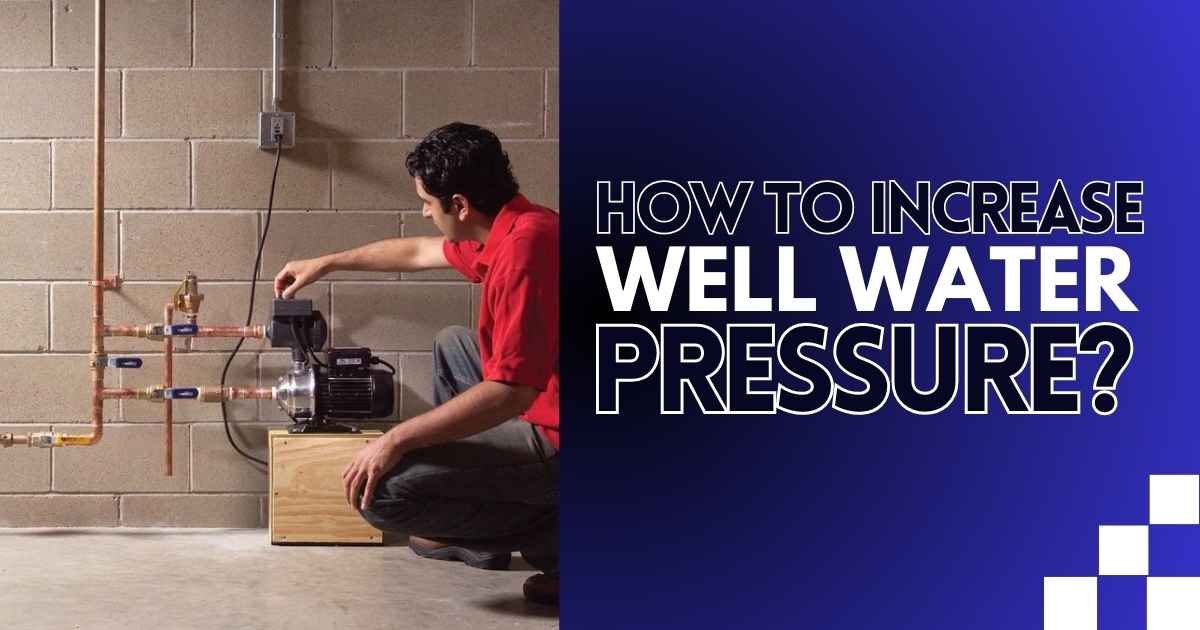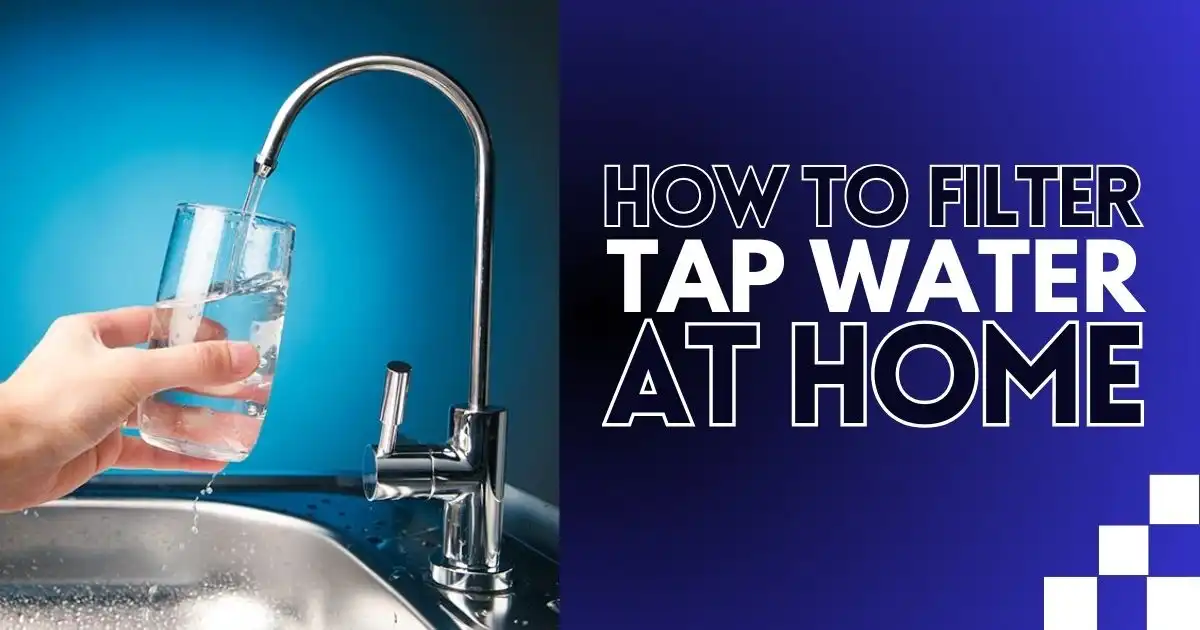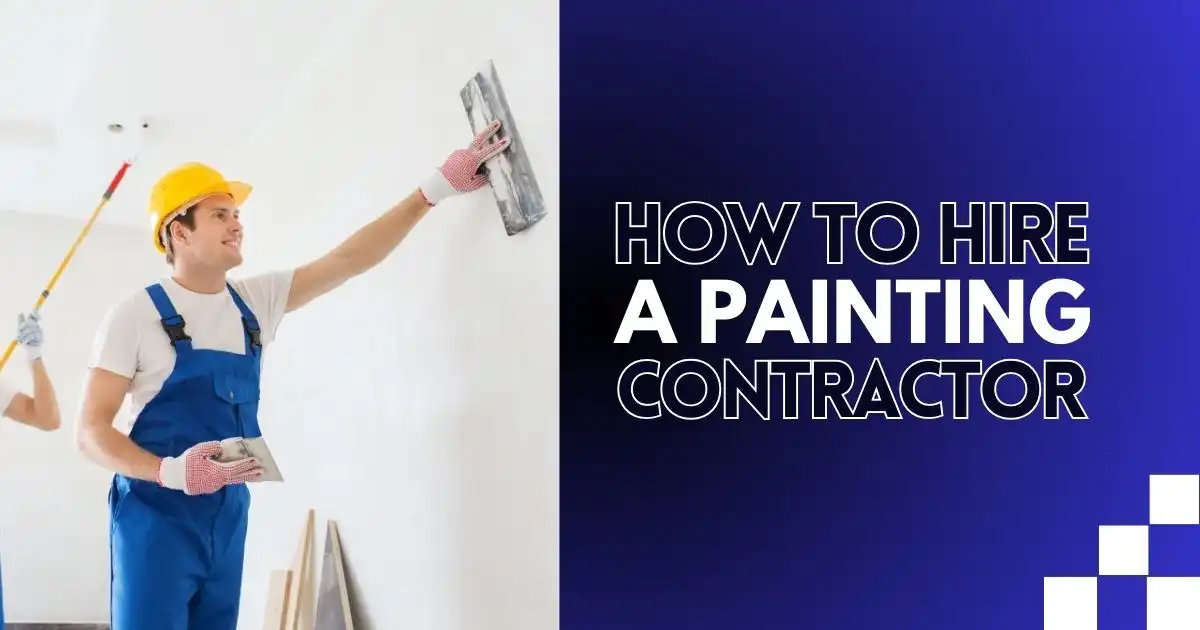Nearly 15 million U.S. households rely on private wells for drinking water, yet over 60% of them experience low water pressure at some point. From weak showers to slow-filling washing machines, poor pressure isn’t just an inconvenience—it’s a sign your well system might be failing you.
It can get worse over time, leading to costly repairs and even water shortages. Some homeowners even resort to expensive municipal water hookups, thinking it’s the only fix. Are you wasting thousands on a ‘fix’ while a simple, cheaper solution is ignored?
What is a Well Water Pressure?
Water pressure, measured in psi (pounds per square inch), is the force that moves water through pipes and plumbing. In a well system, a jet or submersible pump extracts water and stores it in a pressure tank. This tank maintains a steady supply of pressurized water for household use.
A pressure switch regulates the system by monitoring the tank’s pressure, activating the pump when needed to maintain a typical range of 40-60 psi. This process ensures consistent water flow, preventing fluctuations. The pressure tank acts as a buffer, reducing pump cycling and improving efficiency in delivering water throughout the home.
Why is Your Well Water Pressure Low?
Several factors can explain why a well has low pressure. Identifying these causes can help you fix the problem and restore normal water flow without costly repairs.
- Pressure Tank Issues: A waterlogged or ruptured bladder reduces flow, causing weak pressure and frequent cycling. Fixes include pressure adjustment or tank replacement.
- Clogged Pipes or Fixture: Mineral buildup or debris narrows pathways, restricting flow. Cleaning or replacing pipes restores normal pressure.
- Well Pump Problems: An aging or undersized well pump may struggle to maintain adequate water pressure, especially during high-demand periods, leading to well pressure low issues.
- Pressure Switch Settings: Incorrect pressure switch settings or a faulty switch can affect the well pump, causing low water pressure.
- Water Supply Issues: A dropping water table due to drought or overuse can reduce the well pump’s water supply, lowering pressure. Likewise, an overworked well may fail to meet demand.
If you have no water pressure from well or notice weak flow, checking these common issues can help you find a solution. Fixing the problem early can prevent bigger repairs and keep your water flowing properly.
7 Steps to Increase Well Water Pressure
From checking the pressure tank to upgrading your pump, these 7 steps can help fix low well water pressure and improve your system’s performance.
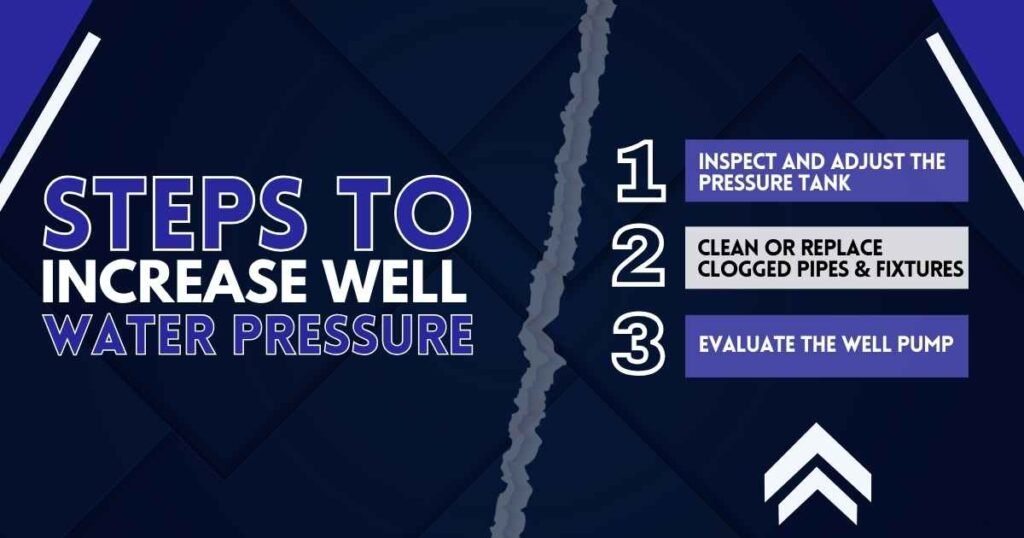
1. Inspect and Adjust the Pressure Tank
First, turn off the well pump and drain the tank. Next, use a pressure gauge to measure the air pressure inside the tank. The pressure should be 2 psi below the pump’s cut-in pressure (the point at which the pump activates). If the reading is too low, use an air compressor to add air until it reaches the correct level.
Inspect the pressure tank for any unusual heaviness or excess water. A waterlogged tank happens when the bladder or diaphragm fails, letting water fill the air side. This prevents the tank from keeping proper pressure, leading to low pressure well water. Draining, repair, or full replacement may be needed to fix the issue.
2. Clean or Replace Clogged Pipes & Fixtures
Inspect faucets, showerheads, and visible pipes for mineral buildup, rust, or sediment accumulation, as these deposits can restrict water flow and reduce pressure. Pay close attention to fixtures with low or inconsistent flow, as they may be clogged with debris. Identifying and addressing these issues can help restore proper water pressure and efficiency.
To clean fixtures, soak removable parts like aerators and showerheads in vinegar to dissolve mineral buildup. Scrub them with a brush to remove residue and restore normal flow. Over time, pipes can accumulate debris, leading to low water pressure on a well. Hiring a plumber to flush the system can help remove blockages, improve flow, and ensure optimal performance.
3. Evaluate the Well Pump
Assess the age and capacity of your well pump to determine if it meets your household’s water demand. An undersized or outdated pump may struggle to maintain consistent pressure, especially during high-use periods. Upgrading to a properly sized pump can restore optimal performance and ensure a steady water supply.
Listen for unusual noises or irregular cycling patterns from your well pump, as these can signal worn-out or malfunctioning parts. Strange sounds like grinding or vibrating may indicate a failing pump or motor. Continuous cycling also suggests issues that require inspection, repair, or replacement to prevent further damage and ensure reliability.
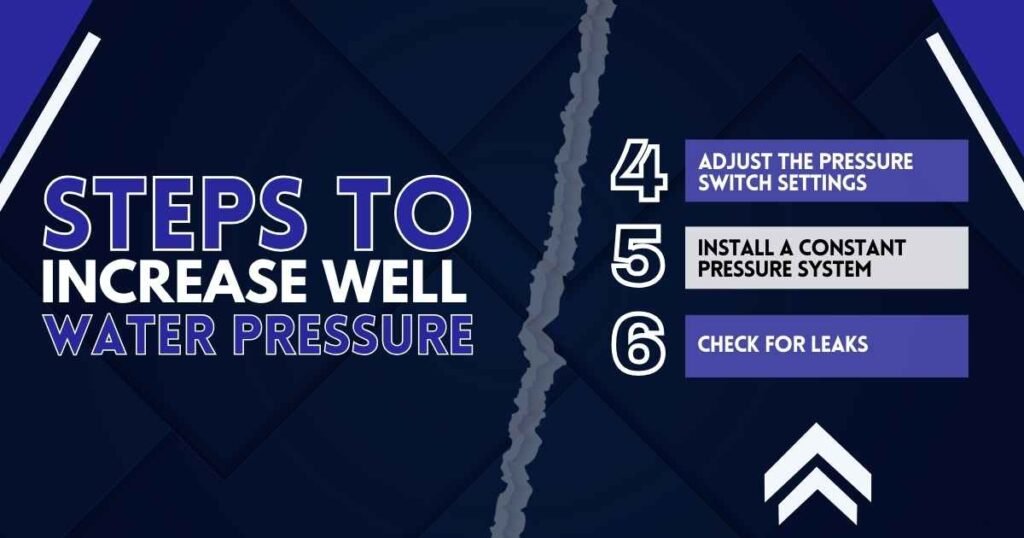
4. Adjust the Pressure Switch Settings
The pressure switch, located near the pressure tank, controls the well pump’s operation with two settings: cut-in pressure, which activates the pump, and cut-out pressure, which turns it off. Identifying the switch is essential for adjusting water pressure effectively, ensuring the system operates effectively and maintains a consistent flow throughout the household.
To increase water pressure, adjust the cut-in and cut-out settings gradually, such as from 40/60 psi to 45/65 psi. Careful adjustments can enhance pressure without overloading the system. However, exceeding the maximum pressure rating can damage the pump or other components, so changes should be made cautiously to maintain system integrity and performance.
5. Install a Constant Pressure System
A Constant Pressure System helps keep low water pressure from well systems steady in homes and buildings. It adjusts the pump speed to match water demand, preventing pressure drops. This system is useful for households with multiple water outlets, ensuring a smooth and reliable flow without sudden changes, making daily tasks more convenient.
Installing this system involves connecting a pressure sensor and a controller to the pump. The sensor monitors water pressure and signals the controller to adjust the pump speed. This setup reduces energy use and extends pump life. It also prevents water surges, protecting pipes and appliances from damage over time.
6. Check for Leaks
Variable speed pumps adjust automatically to changing water demand, ensuring consistent pressure without fluctuations. These pumps offer a more proficient way to maintain steady pressure, regardless of variations in water usage. They provide a smoother flow and can extend the lifespan of your plumbing system by reducing wear and tear.
Variable speed pumps are more competent than constant-speed models, adjusting to real-time water usage. They prevent pressure fluctuations, optimize energy consumption, and reduce system stress. Upgrading to a variable speed pump ensures consistent water pressure, enhancing both system performance and the overall longevity of your plumbing.
7. Consult a Professional
If the water pressure issues continue despite your DIY efforts, it’s time to consult a professional. A licensed plumber or well specialist can diagnose and address more complex problems that may not be easily fixed on your own. They have the expertise to identify core issues and recommend the most effective solutions.
With their knowledge, they can pinpoint underlying issues and suggest the best solutions. For expert plumbing services, call Vegas Plumbing Pros for reliable assistance.
How to Prevent Low Water Pressure from a Well?
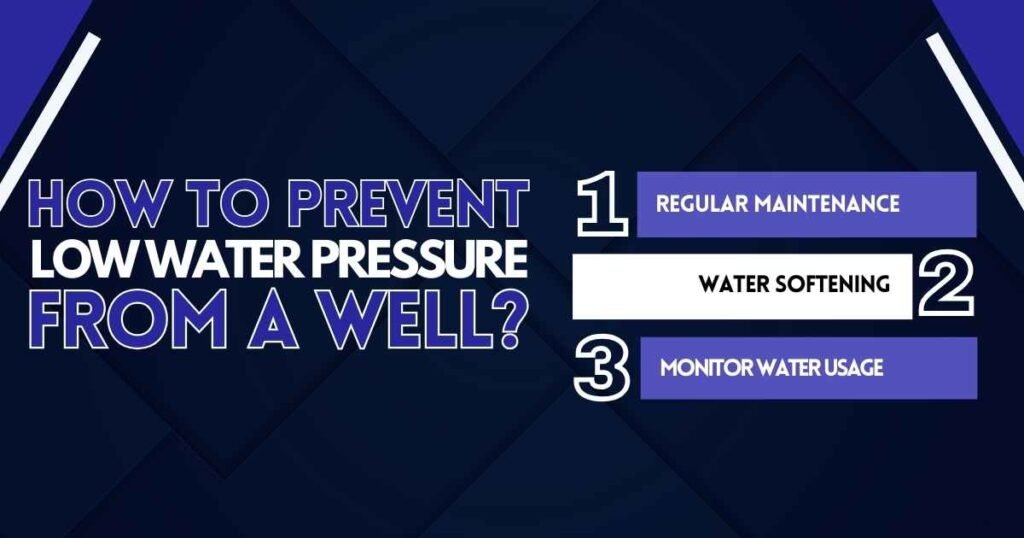
Low water pressure from a well is a common problem. It slows down bathing, cleaning, and watering plants. This can happen due to clogged pipes, a weak pump, or low water levels. Here are simple ways to prevent low water pressure in your well.
1. Regular Maintenance
Scheduling annual inspections for your well system is essential to maintain optimal performance. This should include checking the pump, pressure tank, and pressure switch. Regular maintenance can identify minor issues before they become major problems, ensuring the system works efficiently and avoiding costly repairs or replacements down the road.
2. Water Softening
Hard water contains high levels of minerals like calcium and magnesium, which can build up in pipes, fixtures, and appliances over time. Installing a water softener can help prevent these deposits, reducing maintenance costs and improving water flow. Softening water will also enhance the longevity of your plumbing system and appliances.
3. Monitor Water Usage
Being mindful of high-demand activities, like running multiple showers, washing machines, or dishwashers, can prevent drops in water pressure. Overloading the system strains the well pump, reducing pressure. Spacing out heavy water usage throughout the day helps maintain steady pressure and reduces strain on the system.
Fix It, Don’t Replace It!
Low water pressure doesn’t have to be a burden. Don’t fall into the trap of expensive city water hookups when simple, affordable fixes can restore your well’s pressure. Fixing the root causes prevents costly repairs down the road, saving you money. Why pay more when you can fix it for less?
If you’re dealing with persistent low water pressure or need assistance with your well system, don’t hesitate to contact Vegas Plumbing Pros. Our team of experienced professionals is ready to identify and resolve your plumbing issues promptly and efficiently. Call us today to schedule a consultation!
FAQs
Can I increase my wells’ water pressure myself?
You can often boost your well’s water pressure on your own with some effort and basic tools. Before calling a professional, try these three methods. Clogged pipes, faucets, and fixtures are frequent causes of low pressure in well systems. With a little troubleshooting, you may restore strong, steady water flow without extra expense.
Why does my well pump keep lowering water pressure?
Your pressure tank helps maintain strong water flow by storing pressurized water from your well pump. If you experience no water pressure in house with well, the problem often comes from unbalanced pump and tank settings. Adjusting these settings can help restore proper water pressure without needing professional help.
How do you fix low water pressure in a well system?
To improve low water pressure in a well system, start by adjusting the air pressure in the tank to about 2 psi below the cut-in pressure. Clean or replace the water softener filter and check the pressure switch for faults. If your well pump is aging or pipes are leaking, replacing them may be necessary for optimal performance.
How much does it cost to replace a well pressure tank?
Prices vary depending on the faulty component and the labor needed for replacement. If your water pressure low on well, the cost to fix it will depend on the specific issue. For instance, a new well pressure tank typically costs between $300 and $700, while replacing a well pump can range from $975 to $2,800. The complexity of the repair will also affect the final price.
